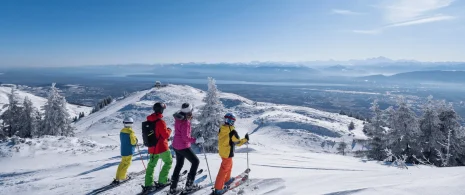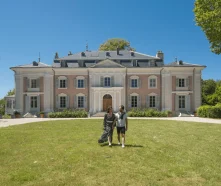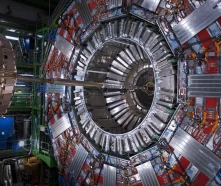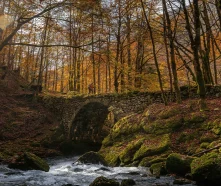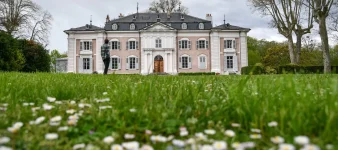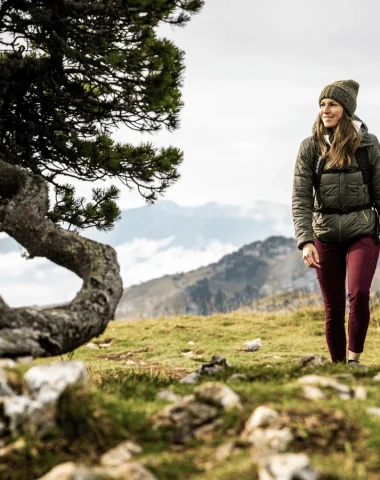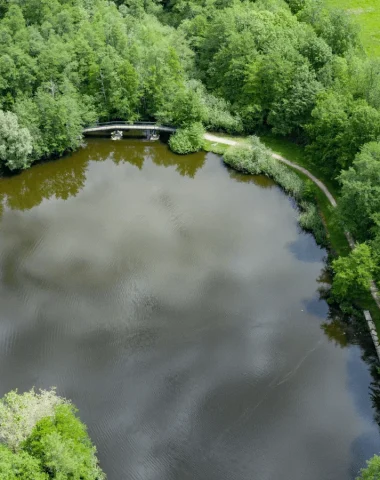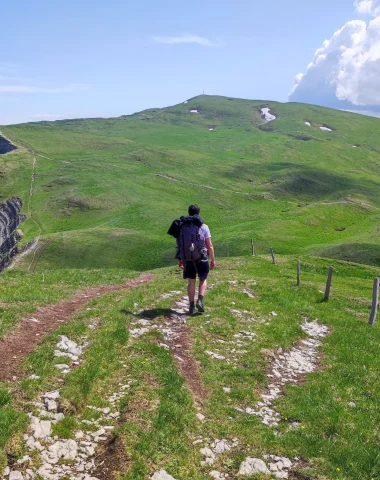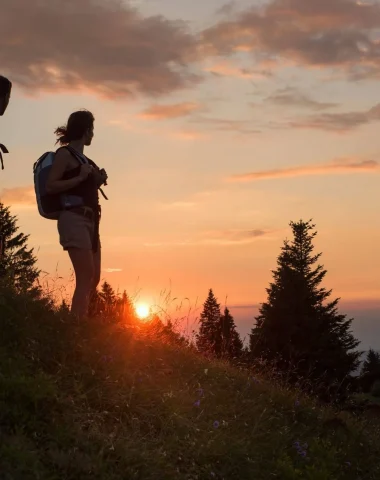By Juliette, on 06 Jul 2023
Reading time: 4 min.
From the caves and canyons of the Crêt de la Neige to the sheer cliffs of the Col de Branveau and the wide valleys with their enchanting streams, the Jura is full of fascinating geological surprises.
Like the many marine fossils that can be seen on the trails. But why did all this happen here?
So let's find out together how the Jura came to be.
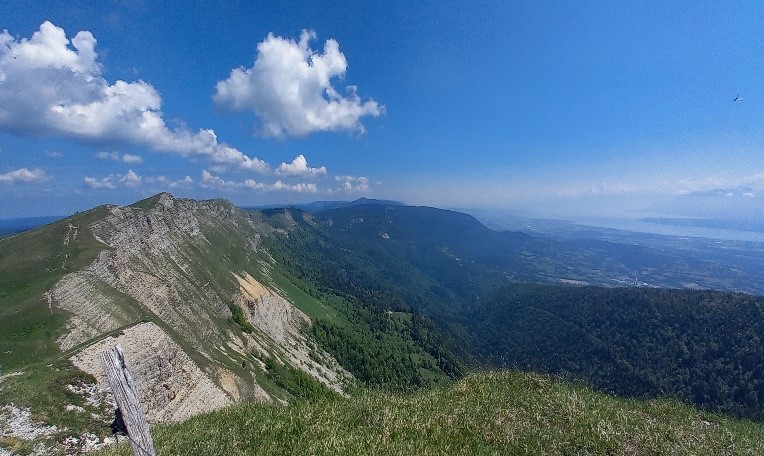
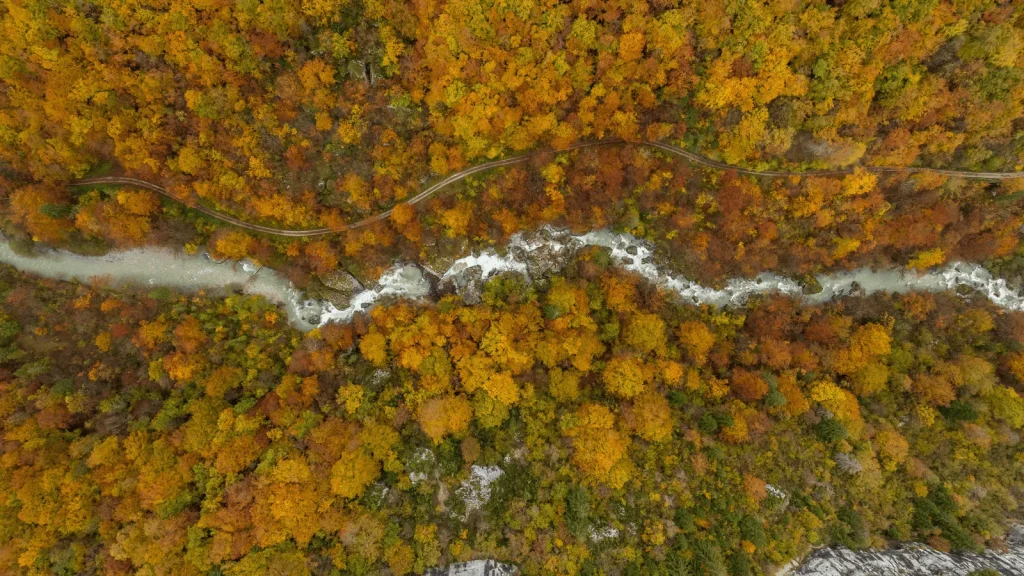
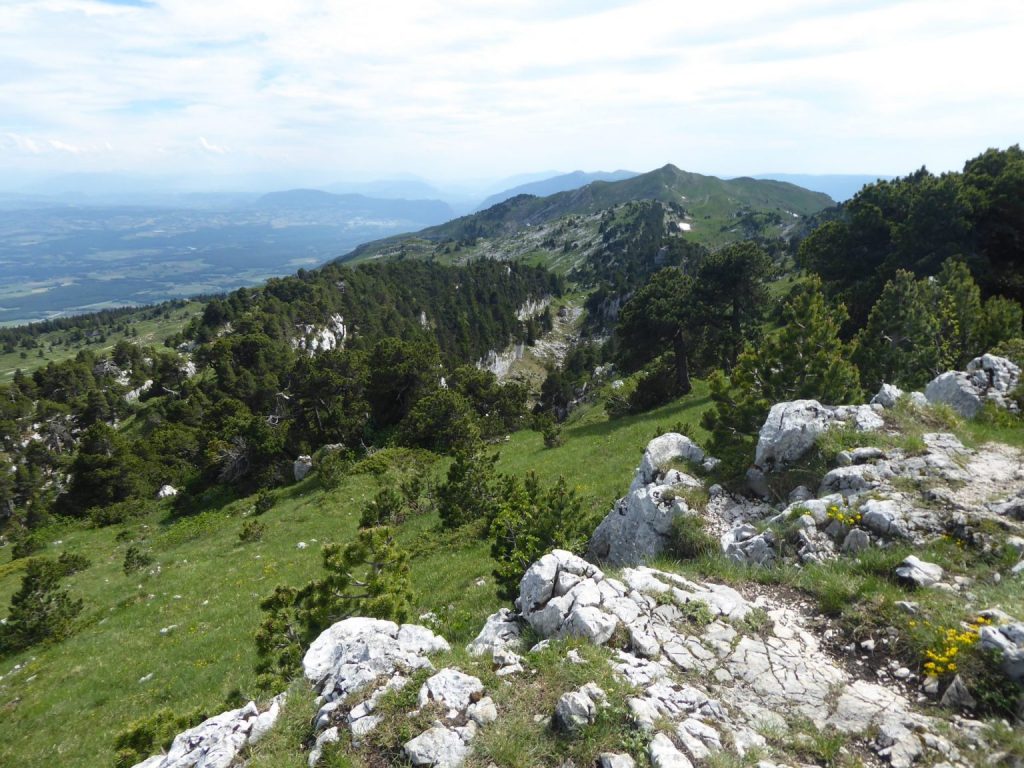
To do this, we need to go back in time…
The Jura in the secondary era (250 million years ago) …
Imagine for a moment that Europe is like the Caribbean, with warm waters teeming with life, a multitude of islands and islets, and a shallow ocean floor. Mild temperatures are the order of the day in this marine Jura… Just like the dinosaurs (which immediately makes you less envious)! They reign supreme over the planet. Want to find out more about the dinosaurs? Go to the Dinoplagne website !
It was also at this time that sediments were deposited in the sea. Today, they allow us to: date geological evolution thanks to the different layers of rock that are clearly visible (Jura marl and limestone), and give the massif an incredible flora (limestone substrate composed of plant sediments that acts like a fertiliser).
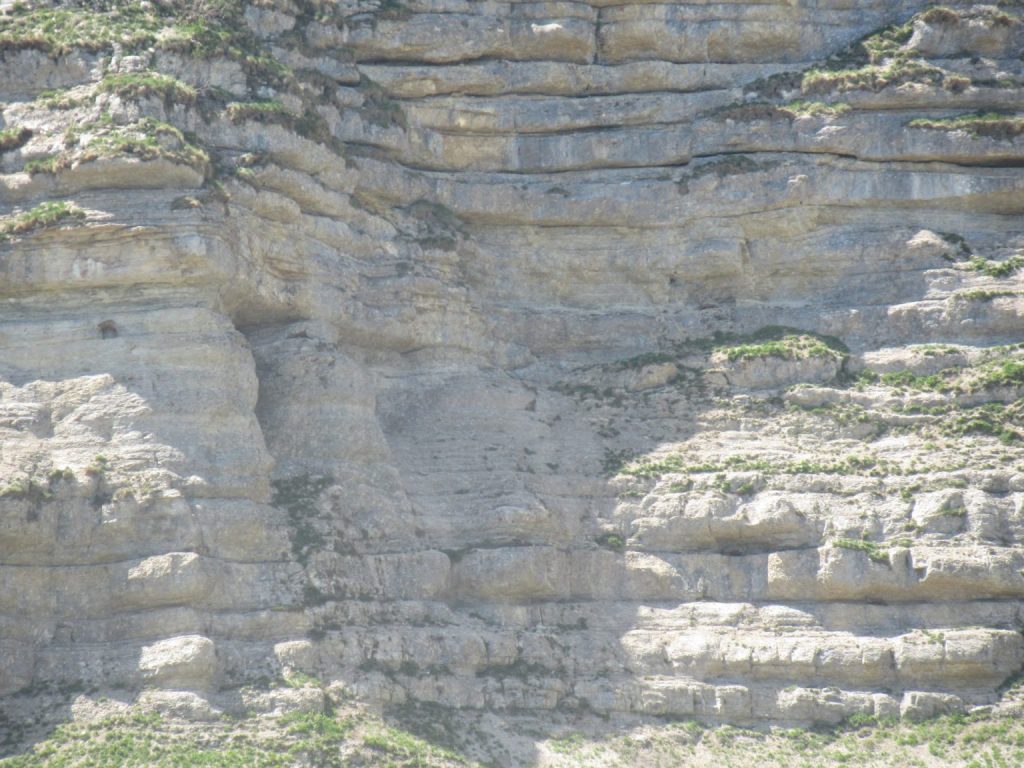

The Jura in the Tertiary era (30 million to 2 million years ago)
The waters of the Tethys (ancestor of the Pacific) bordering Europe gradually receded. The movement of tectonic plates caused the Alps to emerge and rise, exerting strong pressure that folded the Jura Massif, with the Haute Chaine as its first buttress (in part).
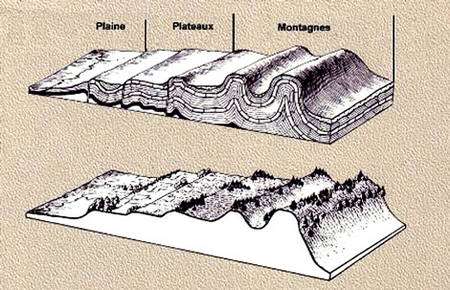

The Jura in the Quaternary era (from -2 million years ago to -20,000 years ago)
Several glacial and interglacial periods followed one another, and the ice pushed the rocks and alluvial deposits further out, deforming the massif. This geological phenomenon is particularly visible in the Hirondelles rock at Chézery-Forens. As the water melted, it later formed the lakes of the Jura as well as wetlands and peat bogs.
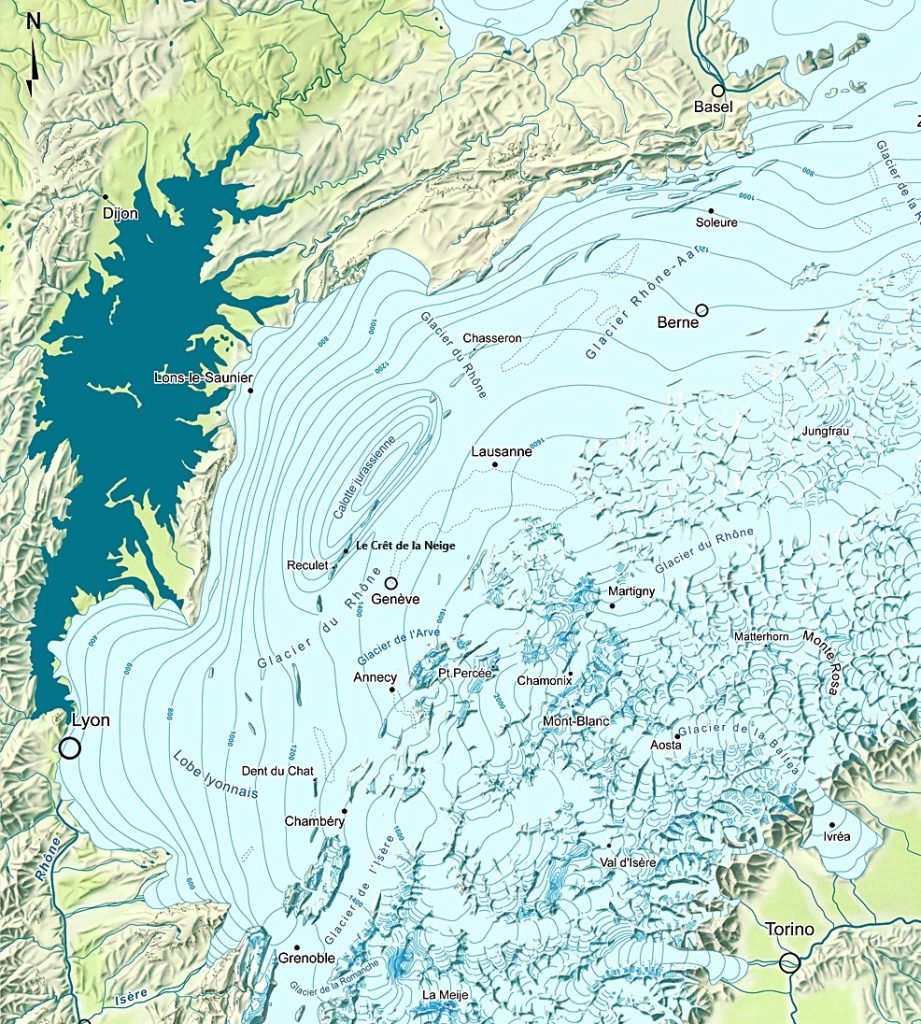
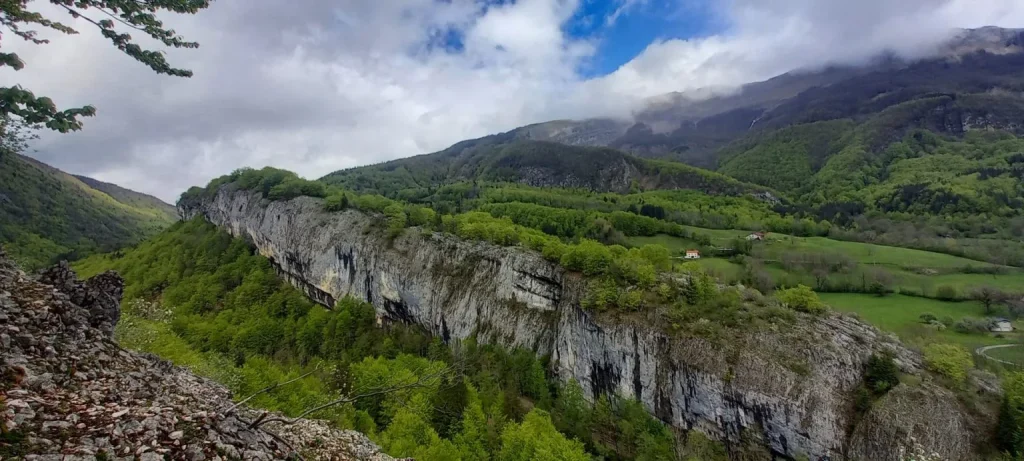
Since the dawn of time, the elements have sculpted the Jura Massif, with its crumbly limestone eroded by rain to create original landscapes: lapiaz, waterfalls, gullies, caves, sinkholes and canyons…
The history of the Jura will continue to evolve, and in several million years’ time it will be more wind-blown and more waterlogged.
Nature is so surprising! Like an artist, with time as her ally, she leaves us with the intrigue of what might be…
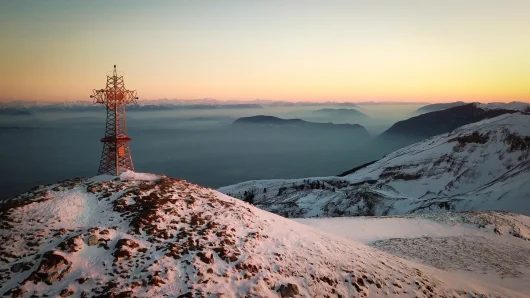
Did you know?
- A crêt is a summit formed by a layer of rock that has been raised and broken up,
- The Crêt de la Neige and the Reculet are the remains of a mountain that was much higher than it is today,
- There was a time when the Valserine valley did not exist, and the high Jura chain and the Bellecombe plateau were one and the same.
How do you see the Jura of the future?
Thematics
Did you find this content useful?
Thank you
Thank you for taking the time to let us know that you found this content useful. Your encouragement is important to us, and your feedback helps us to improve.
Thank you
Thank you for taking the time to let us know that this content was not useful to you. We apologise for any inconvenience.
Share this content
Share this content
You might also like
- Activity
- Family
- Nature
Let’s go fishing in the Cessy pond!
By Anaïs, on 18 Jun 2025
Reading time: 4 min.
- Nature
What you need to know about pitching your tent in the Monts Jura?
By Juliette, on 16 Jun 2025
Reading time: 4 min.
- Nature
5 places to recharge your batteries in Pays de Gex
By Anaïs, on 14 May 2025
Reading time: 6 min.
- Activity
- Nature
Your hike to Crêt de la Neige, the roof of the Jura
By Juliette, on 14 May 2025
Reading time: 4 min.
- Family
- Nature
Our most beautiful sunrise and sunset spots
By Anaïs, on 14 May 2025
Reading time: 6 min.
